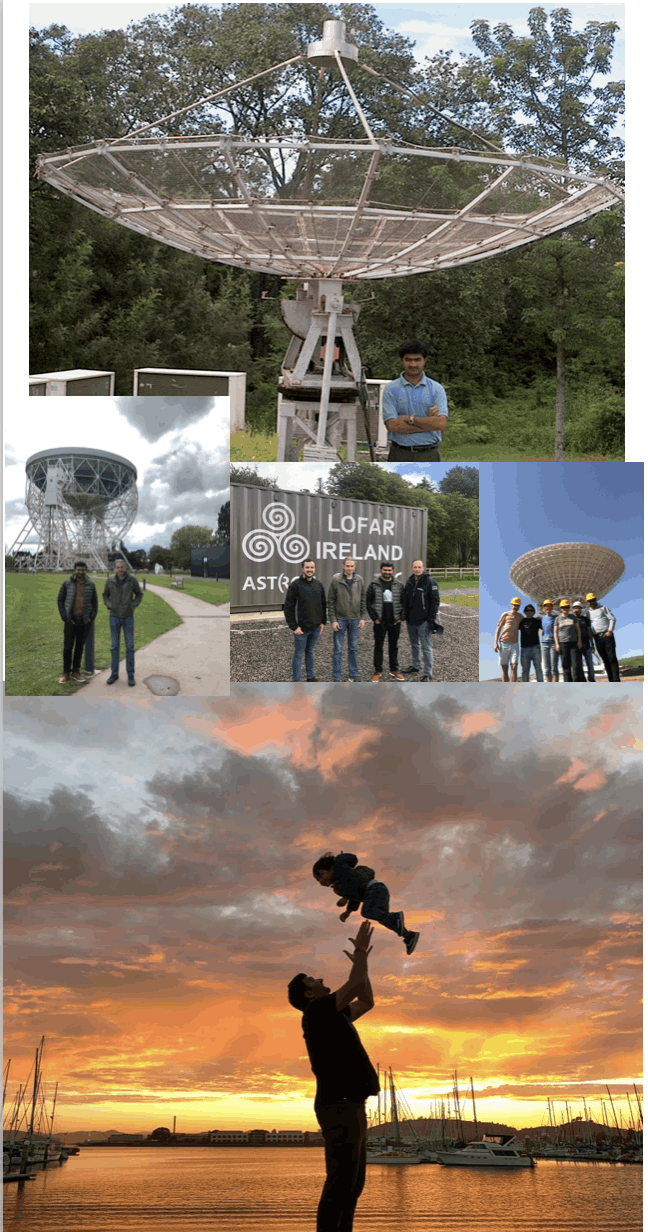
About Me
I am a Staff Astronomer at the SETI Institute and Visiting Researcher with the Breakthrough Listen group in the Department of Astronomy at the University of California, Berkeley. I am a Project Scientist for Breakthrough Listen's International Collaboratory facilities. My professional interests include Searching for Evidence of Intelligent Life in the Universe, unraveling mysteries link to the origin of Fast Radio Bursts, and understanding the Emission Mechanism of Pulsars. I completed my Ph.D. in Astrophysics from the Tata Institute of Fundamental Research's (TIFR) National Center for Radio Astrophysics (NCRA), Pune in 2014 working with one of the world’s largest mid-frequency radio interferometers - Giant Meterwave Radio Telescope in India.
I was born and raised in a small town named Botad in Gujarat, India. I completed my bachelors of engineering in electronics and communication from Shantilal Shah Engineering College, Bhavnagar. I then moved to Pune for higher studies where I joined NCRA-TIFR as an intern to pursue master of physics from the Pune University. In 2009, I joined NCRA-TIFR Graduate school program and earned my PhD in 2014. My thesis focused on pulsar magnetospheric--switching aided by understanding single-pulse properties; such as pulsar nulling, drifting, and mode-changing. I continued that work in my first postdoctoral appointment at the Xinijiang Astronomical Observatory in Urumqi, China. In 2016, I joined the University of California, Berkeley Space Sciences Laboratory as a Templeton Postdoctoral Fellow, jointly appointed with the Berkeley SETI Research Center group in the Department of Astronomy. I lead a commensal search for narrow-band signals using the SERENDIP VI backend at the Arecibo telescope. In this role, I also led the design and commissioning of a fully commensal real-time fast radio burst (FRBs) detection pipeline for the 19-beam receiver on the Five-hundred-meter Aperture Spherical radio Telescope (FAST) in China. In 2019, this system detected multiple bursts from the repeating FRB 121102 in real-time.
As a post-doc with the
University of California, Berkeley, I developed a GPU-accelerated and ML-assisted FRB detection pipeline; named SPANDAK (in Hindi: pulsating objects). One of my proudest achievements is a first discovery of an FRB at the highest radio
frequencies using this pipeline. This tool is currently being utilized for FRB searching across half-a-dozen radio
observatories. The quest to find evidence of technologically advanced extraterrestrial life (technosignature) kept me
motivated throughout my early career. With over a half-decade of experience with the Breakthrough Listen project, I have
been working diligently to push the envelope to look for signs of technosignature. I am a well-established researcher with a
strong publication record -- with close to 100 publications including five nature/nature astronomy papers as a co-author,
with an h-index of 20 -- and compelling expertise in astrophysics as well as computing/instrumentation with over a decade
of experience. I have delivered invited lectures at several scientific conferences and served as a member of several
scientific organizing committees. I have also served as a member of the review panels for the National Science Foundation (NSF) in the US and the National Science Center in Poland along with refereeing close to a dozen articles in high-impact journals. I
closely work with around a dozen radio observatories and have over 400 hours of observing experience from over two
dozen proposals as PI/co-PI.